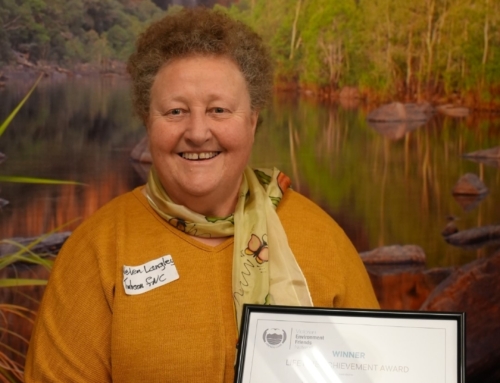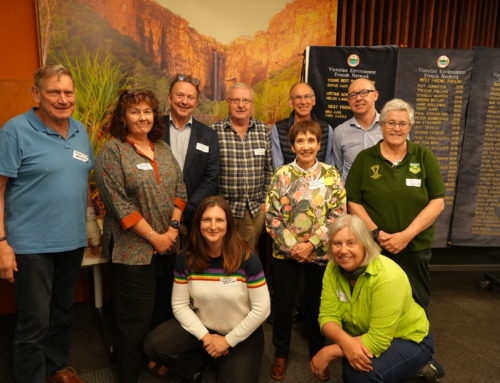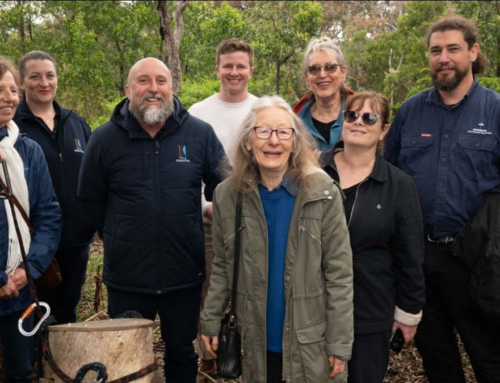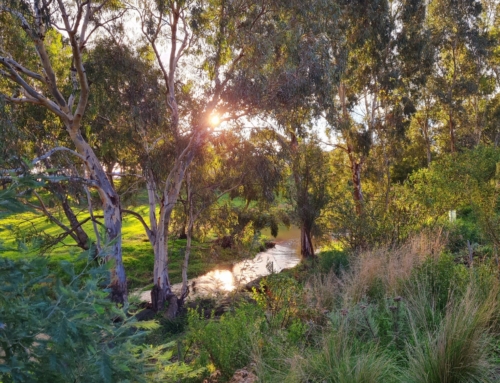In 2016-17 only around 0.3% of government spending is budgeted for parks. Is this minor proportion of government spending on parks enough and what do Victorians get for it?
What is the value of our parks? Parks Victoria recently published Valuing Victoria’s parks (2015) which provided some quantification of the benefits of parks. The chart below shows eight important benefits for which values were estimated.
The report by Parks Victoria includes a range of other benefits in addition to the eight shown in the chart. However, these eight alone provide total annual benefits to the value of $1.8 billion. This means that for every dollar of taxpayer funding provided to Parks Victoria, the community is gaining a benefit of more than $11. This seems a more than reasonable return for the funding invested.
The benefits shown in the chart above are briefly described in the report as follows:
Tourism: Tourists spend $1.4 billion per year associated with their visits to parks, which generate $1 billion gross value added and 14,000 jobs in the State economy.
Port management: Through the management of Port Phillip, Western Port and Port Campbell local ports, Parks Victoria plays a key role in the contribution these ports make to the State economy, estimated at over $300 million gross value added per annum in total.
Water supply: Over one million hectares of water supply catchments are located within Victoria’s parks. The annual run-off from nine of Victoria’s highest water yielding parks is 3,400 gigalitres (16% of the state total). The market value of water runoff supplied in nine of the highest yielding Victorian national parks is estimated at $244 million per year.
Water purification: Clean fresh water from parks is used for drinking water, food production and other industries. It is also an essential requirement for water-based recreation. The forests, woodlands and wetlands of Victoria’s parks improve water quality by naturally purifying and filtering water and reducing the release of soil sediment, pollutants and organic matter that would otherwise reach our waterways and bays. The reduced sediment load from nine of the highest water yielding national and state parks is valued at $50 million per year based on the avoided costs of additional water storage required under an alternative land use. The value of water filtration from metropolitan parks is estimated at $33 million per year, which is based on the avoided cost of maintaining current water quality in metropolitan waterways through alternative infrastructure if the parks were an alternative land use (i.e. medium density urban development).
Flood protection: The native vegetation and wetlands of parks act as important regulators of water movement, protecting community assets from stormwater and flooding. The benefit of stormwater retention services from Melbourne’s metropolitan parks is estimated at $46 million per annum.
Coastal protection: Parks Victoria manages around 70% of the Victorian coast as national or state parks, coastal reserve or marine national park or sanctuary. The value of protecting mangrove, saltmarsh and dunes in parks along Victoria’s coast is conservatively estimated to avoid costs of $24–56 million per year, based on the estimated replacement cost of a combination of seawall construction and revegetation if these coastal natural assets were severely degraded or lost.
Pollination services & honey production: Based on latest studies on the value of pollination services to agriculture across Australia, there are benefits of $123–167 million to consumers and producers across 30 crops from pollination services provided by Victoria’s parks. Beekeeping is a permitted use in some parks and reserves where honeybees access floral resources. Beehives are estimated to produce about 1,200 to 1,600 tonnes of honey products per year. The apiary sector attributable to parks produces honey and related products worth $3.4–$4.6 million per year and payments to beekeepers for pollination services are in the range of $0.6–$1 million per year.
The report discusses a range of other benefits in addition to the above, namely: contributing to climate regulation through storage of carbon; maintenance of genetic diversity and conservation of species; provision of recreation and health opportunities for people; provision of landscape and neighbourhood amenity; provision of Indigenous cultural connections; contribute to conservation of historical places and contributes to social cohesion.
What do we pay for these benefits?
At the heart of any asset management program is creation, maintenance and renewal. The same applies to our parks. They need care, understanding, managed use, and restoration. Protection alone is not enough.
Taxpayer funding for Parks Victoria (direct government grants plus funding from the Parks & Reserves Trust Fund) averaged around $183 million a year for the four years to 2014-15. In 2015-16 this rose to an estimated $190m in 2015-16 and funding is budgeted to rise to almost $200m in 2016-17 (refer chart below).
The benefits to the community of funding our system of parks are substantial and ongoing. In order to maintain and grow these benefits for the future, substantial real increases in funding are needed.
What contribution does VEFN make?
Members of the VEFN make a substantial contribution to the operation of Parks Victoria through volunteer work such as weeding and planting. In 2014-15 volunteers contributed 213,347 hours of time to the maintenance and upkeep of 200 parks managed by Parks Victoria. These volunteer hours were estimated by Parks Victoria to be equivalent to 29,000 volunteer days or 127 people working full time for a year. The volunteer effort in 2014-15 was equivalent to more than 13% of Parks Victoria’s FTE staff of 958 people. Parks Victoria values this volunteer time as being worth at least $6 million per year. This contribution of volunteer time adds significant value to the parks and to the community. Both Parks Victoria and the government recognise the value of this volunteer contribution and expect it to continue or increase.
The government’s draft biodiversity strategy Protecting Victoria’s Environment – Biodiversity 2036 recognises the contribution and potential of volunteer efforts (p33). However, increasing volunteer time also poses management and organisational challenges. Experienced, long time volunteers get older. Demands and distractions of life compete with time for volunteering. Increasing logistical and statutory requirements for all manner of things ranging from safety, insurances and reporting tend to detract from hands ‘on-ground’. Yet some of the greatest rewards and productivity come from the shared learning, trust, and inspiration generated by community volunteers and staff working together to care for the land. We need the backing of a coherent government program to reinstate and underpin funding and field staffing for Parks Victoria together with a coherent and planned effort to sustain and grow volunteer efforts. This should be done in the context of a strategic plan that provides certainty to both Parks Victoria and the community.






